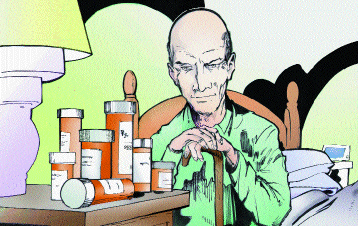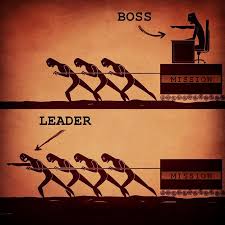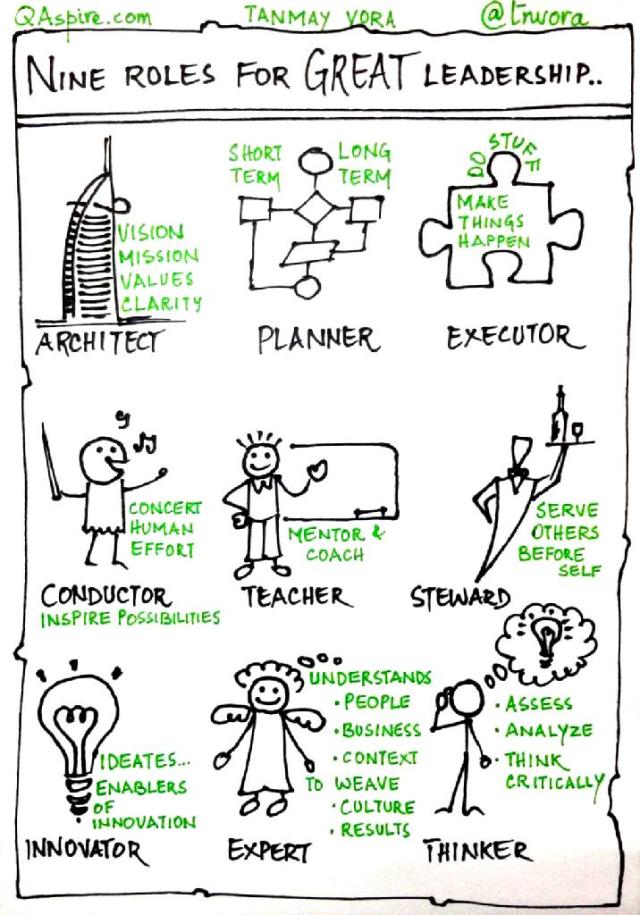Assistant Professor (Pharmaceutics), Department of Pharmacy, Mewar University,NH – 79, Gangrar,Chittorgarh, Rajasthan-312 901, India
Friday, January 29, 2016
Gaurav Kumar Sharma : PHARMACEUTICAL RESEARCH BOOK ON “THE NEW HETEROAR...
Gaurav Kumar Sharma : PHARMACEUTICAL RESEARCH BOOK ON “THE NEW HETEROAR...: PHARMACEUTICAL RESEARCH BOOK ON “ THE NEW HETEROARYL COMPOUNDS HAVING 5-HT1A/5-HT2A AFFINITY ” BY GAURAV KUMAR SHARMA Title ...
Wednesday, January 27, 2016
Gaurav Kumar Sharma : Gaurav Kumar Sharma : Polypharmacy in Ind...
Gaurav Kumar Sharma : Gaurav Kumar Sharma : Polypharmacy in Ind...: Gaurav Kumar Sharma : Polypharmacy in India : Polypharmacy in India Polypharmacy refers to utilize the huge number of medicatio...
PHARMACEUTICAL RESEARCH BOOK ON “THE NEW HETEROARYL COMPOUNDS HAVING 5-HT1A/5-HT2A AFFINITY” BY GAURAV KUMAR SHARMA
PHARMACEUTICAL RESEARCH BOOK ON
“THE NEW HETEROARYL COMPOUNDS HAVING 5-HT1A/5-HT2A AFFINITY”
BY GAURAV KUMAR SHARMA
Title
“The new heteroaryl compounds having 5-HT1A/5-HT2A affinity”
Authors
Meenakshi Dhanawat, Gaurav Kumar Sharma, Sushant Kumar Shrivastava.
Publication
Internationally Published By LAP LAMBERT Acedemic Publishing Deutchland, Germany.
Publication ISBN
978-3-659-69488-2
Available to sell at Worldwide
 Australia
Australia
 Bulgaria
Bulgaria
 Canada
Canada
o Scripturegiftandbookshop.com
 China
China
 Estonia
Estonia
 England
England
 Europe
Europe
o knihy24.cz
 France
France
 Germany
Germany
o www. AbeBooks.de.com
 Hong Kong
Hong Kong
 Hungary
Hungary
 India
India
 Italy
Italy
o http://www.amazon .it
 Japan
Japan
 Jordan
Jordan
 Malta
Malta
 Mexico
Mexico
 New York
New York
 Norway
Norway
 Netherland
Netherland
 Poland
Poland
 Portugal
Portugal
 Russia
Russia
 Singapore
Singapore
 South Korea
South Korea
 Spain
Spain
 Sweden
Sweden
 U.K.
U.K.
 USA
USA
o wordery.com
Saturday, January 23, 2016
Gaurav Kumar Sharma : Polypharmacy in India
Gaurav Kumar Sharma : Polypharmacy in India: Polypharmacy in India Polypharmacy refers to utilize the huge number of medications, commonly considered to be the use of five or mo...
Polypharmacy in India
Polypharmacy in India
Polypharmacy refers to utilize the huge number of medications, commonly considered to be the use of five or more. Since Polypharmacy is a consequence of having several underlying medical conditions, it is much more common in elderly patients. An approximate 30 percent to 40 percent of elderly patients take five or more medications. The phrase implies an assumption that using one or more of these medications may be questioned or needless. Thus, Polypharmacy also can be defined as the use of more medications than are clinically indicated.

Reasons for Polypharmacy
As known the major reason for Polypharmacy is that a patient has many co-existing medical conditions receiving treatment. In addition, in the case of diseases such as heart failure and high blood pressure, combinations of two to three different medications are common and recommended. If medications for symptomatic relief are added, it is easy to see why patients end up with a large number of medications. Sometimes a new medication is prescribed to treat the adverse effects of another drug, often when stopping or changing the dose of the offending drug would solve the problem.
A contributing factor is that patients see different physicians for their medical problems, and being under the care of several specialists is a major reason for Polypharmacy. This can be true because specialists often focus on their area of expertise rather than on the patient as a whole. There is often a need for a primary care physician — a general internist, a family practitioner or a pediatrician — to coordinate the use of multiple medications.
Another reason for Polypharmacy is that the documentation of why a medication was prescribed initially is often missing in the medical record, making decisions to consider termination of a treatment difficult to make later. As a result, there is a tendency for doctors to let patients continue the medications they are taking, especially if the indications are unclear or unknown. In addition to medications lacking an indication, other medications may be of limited value or are therapeutic duplications.

Consequences of Polypharmacy
The major consequence of Polypharmacy to a patient is a much higher risk of adverse drug effects. This risk increases based on the number of medications prescribed and taken. These adverse drug effects often require physician contacts and, in some cases, emergency room visits or hospitalizations. Moreover, if an adverse effect emerges, it can be very difficult to figure out which of the many drugs is the cause. Another possible problem is what is referred to as medication or drug interactions, meaning that the effects of one medication, favourable or unfavourable, may change if given together with another medication. Thus, taking five or more medications leaves many opportunities for such interactions. The knowledge of medication interactions gained during the drug development phase is often limited due to incomplete testing.
Polypharmacy also places a burden on patients to remember when and how to take all prescribed medications. Multiple medications increase the risks of inappropriate medication use, non-adherence, adverse effects and medical cost. Another unwanted effect could be that physicians may hesitate to prescribe a new essential medication to a patient already on five or more medications. Thus, paradoxically, Polypharmacy can lead to under treatment.
Another consequence of overutilization is the soaring cost of health care in the Country. So we have to strongly recommend a medication review for patients prescribed a large number of medications.
Wednesday, January 20, 2016
Sunday, January 17, 2016
Gaurav Kumar Sharma : PHARMACEUTICAL RESEARCH BOOK ON “SYNTHESIS OF MONO...
Gaurav Kumar Sharma : PHARMACEUTICAL RESEARCH BOOK ON “SYNTHESIS OF MONO...: PHARMACEUTICAL RESEARCH BOOK ON “SYNTHESIS OF MONO AND DISACCHARIDE GLYCOSIDE AMINO ACID AS POTENT CHOLERATOXIN INHIBITOR” BY GAURAV...
Saturday, January 16, 2016
Gaurav Kumar Sharma : What is the role of leadership?
Gaurav Kumar Sharma : What is the role of leadership?: What is the role of leadership? Leadership has many roles and key areas of expertise. As an architect of the future, the leader not on...
What is the role of leadership?
What is the role of leadership?
Leadership has many roles and key areas of expertise. As an architect of the future, the leader not only needs to have a clear and compelling vision of the future that is aligned to core values, they also need to make sure their people are engaged, share that vision and understand the reason why Planning is critical. Perhaps one of the most critical areas of leadership is great execution.

Roles
1. Self-assessment:
Effective leaders periodically take stock of their personal strengths and shortcomings. They ask: “What do I like to do? What am I really good at?” “What are my areas of weakness, and what do I dislike doing?”
Knowing your areas of weakness does not make you weak; on the contrary, it allows you to delegate to others who have those abilities, in order to achieve the common goal. Rather than clinging to the false belief that they can do it all, great leaders hire people who complement, rather than supplement, their skills. Working on your areas of weaknesses will improve your leadership ability – and recognizing them makes you more human.
2. Sharp perception:
Do you know how people really perceive you? Effective leaders do. They have an easy level of honest communication with their teams and their peers, and a thorough understanding of how they are perceived. Testing others’ perception of you can be as simple as observing their behavior. Are your co-workers and team members relaxed around you? Does all conversation stop when you enter the room?
If you really want to know what people think, just ask them. You may receive feedback that you’re not listening or showing appreciation as well as you could be. If you’ve established an environment of honest and open communication, you should be able to ask about your good qualities and the areas you need to improve on. Your staff will appreciate your effort.

3. Responsive to the group’s needs:
Being perceptive can also help a leader be more effective in knowing the needs of the team. Some teams value trust over creativity; others prefer a clear communicator to a great organizer. Building a strong team is easier when you know the values and goals of each individual, as well as what they need from you as their leader.
4. Knowing the organization:
Effective leaders know the organization’s overall purpose and goals, and the agreed-upon strategies to achieve these goals; they also know how their team fits into the big picture, and the part they play in helping the organization grow and thrive. Full knowledge of your organization – inside and out – is vital to becoming an effective leader.
5. Communication :
Good communication skills are required at every level of business, but leaders must possess outstanding communication skills. Luckily, this is a skill that can be learned.

6. Motivating teams :
Inspiring others is the mark of an effective leader. Motivation is best done by example and guidance, not by issuing commands.
7. Team building :
Putting together strong teams that work well is another trait of great leaders. The opposite is also true: if a team is weak and dysfunctional, it is generally a failure in leadership.
8. Risk taking :
You can learn how to assess risk and run scenarios that will help you make better decisions. Great leaders take the right risks at the right time.
9. Vision and goal setting :
A team depends on its leader to tell them where they are going, why they are going, and how they’re going to get there. People are more motivated when a leader articulates his or her vision for a project or for the organization, along with the steps – or goals – needed to achieve it.

A great leader will challenge and encourage, create and inspire, assess and analyse then align and mobilise talent to activate and deliver success.
Thursday, January 14, 2016
Monday, January 11, 2016
Gaurav Kumar Sharma : PHARMACEUTICAL RESEARCH BOOK ON “SYNTHESIS OF MONO...
Gaurav Kumar Sharma : PHARMACEUTICAL RESEARCH BOOK ON “SYNTHESIS OF MONO...: PHARMACEUTICAL RESEARCH BOOK ON “SYNTHESIS OF MONO AND DISACCHARIDE GLYCOSIDE AMINO ACID AS POTENT CHOLERATOXIN INHIBITOR” BY GAURAV...
Wednesday, January 6, 2016
Gaurav Kumar Sharma : PHARMACEUTICAL RESEARCH BOOK ON “SYNTHESIS OF MONO...
Gaurav Kumar Sharma : PHARMACEUTICAL RESEARCH BOOK ON “SYNTHESIS OF MONO...: PHARMACEUTICAL RESEARCH BOOK ON “SYNTHESIS OF MONO AND DISACCHARIDE GLYCOSIDE AMINO ACID AS POTENT CHOLERATOXIN INHIBITOR” BY GAURAV...
PHARMACEUTICAL RESEARCH BOOK ON “SYNTHESIS OF MONO AND DISACCHARIDE GLYCOSIDE AMINO ACID AS POTENT CHOLERATOXIN INHIBITOR” BY GAURAV KUMAR SHARMA
PHARMACEUTICAL RESEARCH BOOK ON
“SYNTHESIS OF MONO AND DISACCHARIDE GLYCOSIDE AMINO ACID AS POTENT CHOLERATOXIN INHIBITOR”
BY GAURAV KUMAR SHARMA
Title
“Synthesis of Mono and Disaccharide glycoside Amino Acid as Potent Choleratoxin Inhibitor”
Authors
Meenakshi Dhanawat, Gaurav Kumar Sharma, K.P.R. Kartha.
Publication
Internationally Published By LAP LAMBERT Acedemic Publishing Deutchland, Germany.
Publication ISBN
9783659275876
Available to sell at Worldwide
 Australia
Australia
o http://www.holisticpage.com International Online Store of Inspiration
 Bulgaria
Bulgaria
 Canada
Canada
o http://www.amazon .ca
o Scripturegiftandbookshop.com
 China
China
 Estonia
Estonia
 England
England
 Europe
Europe
o knihy24.cz
 France
France
o http://www.amazon .fr
 Germany
Germany
o www. AbeBooks.de.com
 Hong Kong
Hong Kong
 Hungary
Hungary
 India
India
 Italy
Italy
 Japan
Japan
 Jordan
Jordan
 Malta
Malta
 Mexico
Mexico
 New York
New York
 Norway
Norway
 Netherland
Netherland
 Poland
Poland
 Portugal
Portugal
 Russia
Russia
 Singapore
Singapore
 South Korea
South Korea
 Spain
Spain
 Sweden
Sweden
 U.K.
U.K.
 USA
USA
o wordery.com
Subscribe to:
Posts (Atom)



